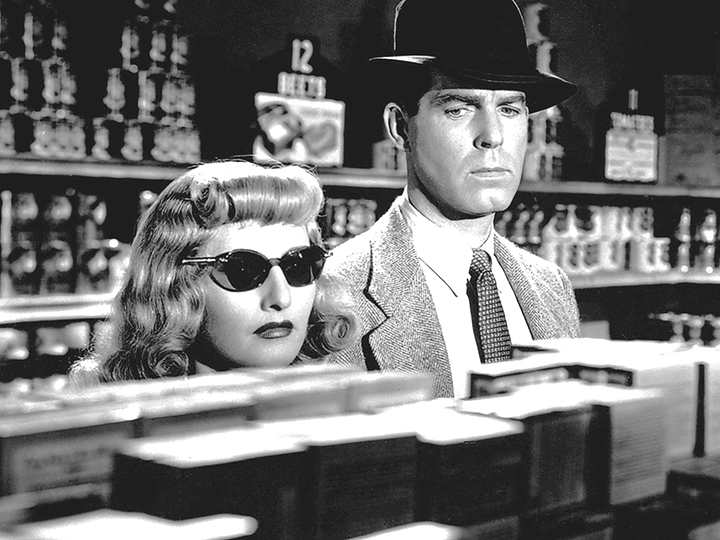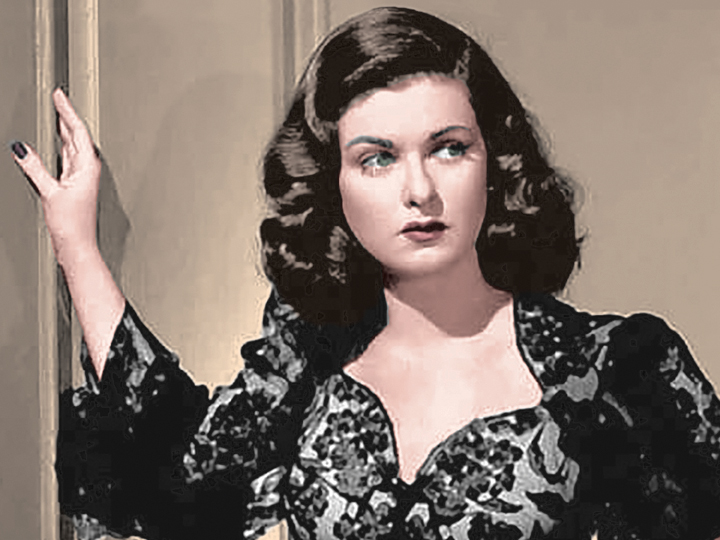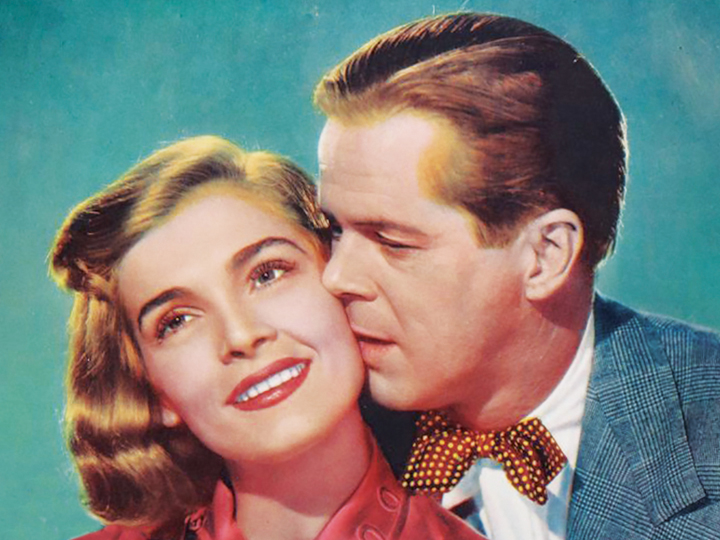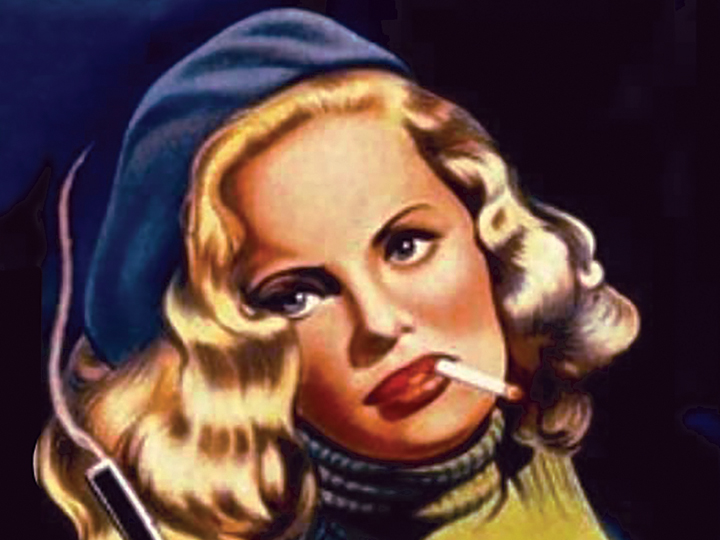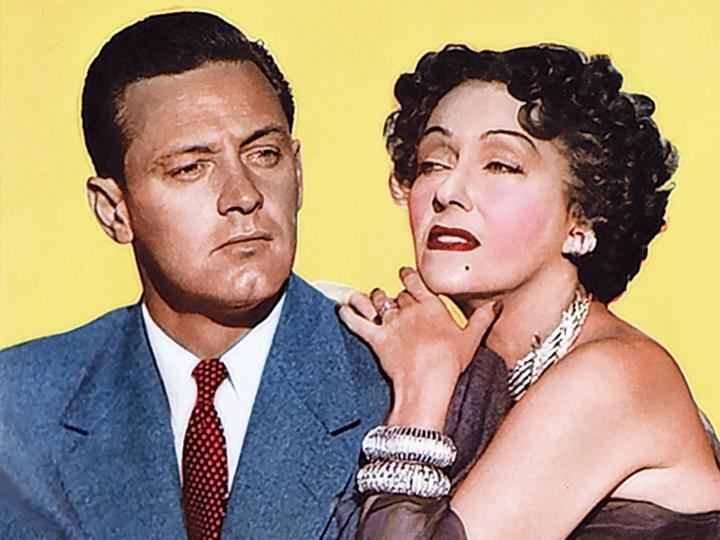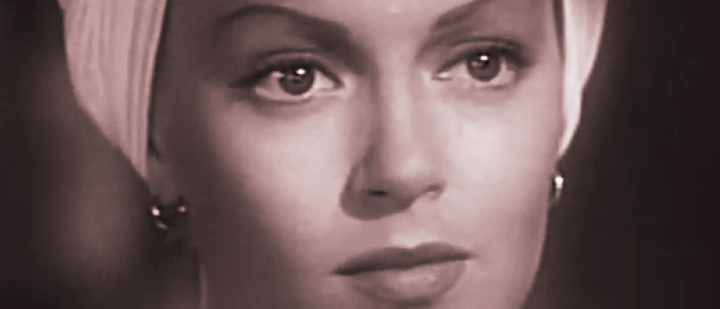
Cinematic sirens’ cunning charm
Yeah, it’s a little bit sexist, but don’t let that stop you from immersing yourself in an often rewarding sub-genre of film noir. Below are my picks for the best femme fatale films. (It pained me not to include “Sherlock Holmes and the Spider Woman” starring the great Gale Sondergaard, but I only allow myself six picks.)
‘Double Indemnity’ (1944)
Insurance agent Walter Neff (Fred MacMurray) is making a routine call to the home of a client named Dietrichson (Tom Powers), when down the stairs strolls Dietrichson’s attractive young wife, Phyllis (Barbara Stanwyck).
A couple of flirty exchanges give Walter the notion that Phyllis might be open to a private consultation.
This pairing seems meant to be. He knows the ins and outs of the insurance business. She has a husband who, you never know, may meet up with a fatal accident some day.
But if Walter is to join forces with Phyllis, he’d better deal carefully with Barton Keyes (Edward G. Robinson), his boss at the insurance company. Keyes is a bloodhound who can sniff out an “iffy” claim from a mile away.
Billy Wilder directed and co-wrote this noir classic that stands as a quintessential example of the femme fatale genre.
‘Scarlet Street’ (1945)
Spoilers follow. Edward G. Robinson stars as a mousy bank clerk, wanna-be artist and henpecked husband who is married to the widow (Rosalind Ivan) of a cop killed in action. Her late husband’s portrait hangs — and looms — in the couple’s parlor. Robinson creates his paintings on Sundays … that is, when his wife lets him.
One rainy night in Greenwich Village, he spots a thug in a straw hat (Dan Duryea) slapping around a woman (Joan Bennett). Wielding his umbrella, Robinson comes to Bennett’s rescue, but Duryea vanishes before the police arrive.
Bennett — who is in cahoots with Duryea, naturally — soon realizes she’s got a fish on the line, though she vastly overestimates Robinson’s net worth.
Fritz Lang’s noir “Scarlet Street” is tawdry and sad, with a shockingly violent sequence and a heartbreaking coda.
Bennett later starred in the 1966-71 Gothic soap opera “Dark Shadows.” Among her multiple roles (a tradition of the show) was Naomi Collins, mother of 18th-century vampire Barnabas Collins.
‘The Postman Always Rings Twice’ (1946)
Many movies in the femme fatale genre have what is sometimes called “the moment.” It’s when the ill-fated fella first lays eyes on the gorgeous — but dangerous — “dame.” From then on, he’s a goner. This cinematic ploy works best if the viewer can believe it. When John Garfield falls hard for Lana Turner on first glance in Tay Garnett’s “The Postman Always Rings Twice,” you believe it.
Garfield plays Frank Chambers, a drifter who takes a job at a combination gas station/hamburger joint owned by a portly, congenial senior, Nick Smith (Cecil Kellaway). It’s an uncomplicated gig — that is, until she appears. Cora (Turner), Nick’s luminous young wife, is a vision in white who is dressed for tennis, but playing a deadlier game.
Sound a bit like “Double Indemnity”? James M. Cain wrote both novellas on which the films were based.
‘Too Late For Tears’ (1949)
It’s a classic noir conundrum. You’re driving along a dark, winding highway one night; an oncoming car unexpectedly signals you; as the car passes, its driver tosses a valise into your convertible; the valise is stuffed with thousands of dollars in unmarked bills. What now?
“It’s a bag of dynamite,” says Alan Palmer (Arthur Kennedy), but his wife Jane (Lizabeth Scott) can only think of what this money might bring her: furs, diamonds, status.
Reality intrudes when Danny Fuller (Dan Duryea), a man with a thing for bow ties who is posing as a detective, shows up on Jane’s doorstep and starts asking questions.
Byron Haskin’s low-budget gem “Too Late for Tears” has a tour de force performance by Scott as an operator who uses her sexuality as a weapon, vacillating on a dime between creepy charm and murderous rage.
‘Gun Crazy’ (1950)
The term “femme fatale” was invented for characters like Annie Laurie Starr, a carnival sharpshooter played by Peggy Cummins with a beguiling mix of iciness and allure in Joseph H. Lewis’ noir thriller “Gun Crazy.”
She’s the spider, he’s the fly — “he” being Bart Tare, played by John Dall, who likewise presents a character with dual traits. Bart is a small-town goober who, once he lays eyes on Annie, can’t wipe the smile off his face.
But he’s also a confident dead shot who can hit any target — just the sort of man-of-action Annie is looking for.
The next thing you know, these two are making like Bonnie and Clyde. We watch Annie twist Bart, who is powerless against her charms, tighter and tighter around her little finger, sealing both of their fates. They do bad things, but somehow, we still root for them.
‘Sunset Boulevard’ (1950)
Eluding repo men, down-on-his-luck screenwriter Joe Gillis (William Holden) skids into the driveway of a weed-choked mansion, where he meets Norma Desmond (Gloria Swanson), a faded movie star from the silent era who hasn’t made a picture in 20 years. Norma has the pallor of a wealthy recluse and the wild eyes of a demented soul.
“You used to be big,” Joe says rather unchivalrously. “I am big,” Norma hisses back. “It’s the pictures that got small.”
She then sets a trap for this handsome young buck, hiring Joe to edit a script she is writing for a planned comeback. Of course, before long, Norma is buying camel-hair coats and solid-gold cigarette cases for her new boy toy.
Billy Wilder’s black comedy “Sunset Boulevard” is a movie about the movies, but a valentine, this ain’t.
TRAILERS
